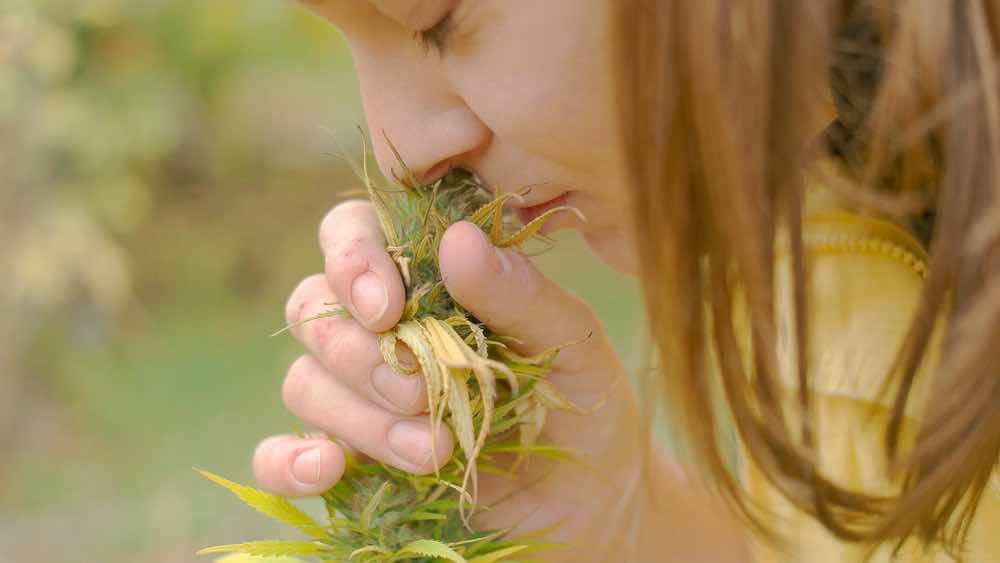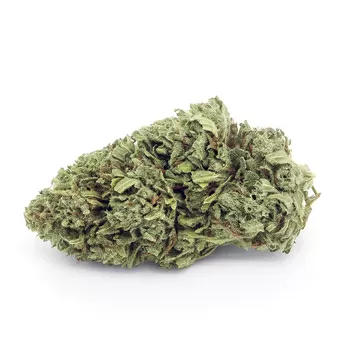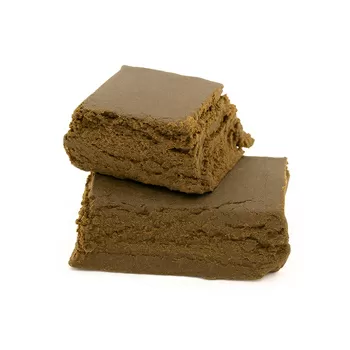Buying good quality weed is not to be underestimated, as it is the quality of the cannabis that ensures a pleasurable and satisfying recreational experience.
However, especially for occasional users of marijuana or those who are still 'laymen' of the plant material, recognising its characteristics simply at a glance may not be so immediate or intuitive.
Evaluating good-quality weed solely on its visual appearance could in fact be misleading. For this reason, it is necessary to smoke it, vaporize it or use it in tasty marijuana recipes in order to draw the necessary conclusions, based mainly on factors such as aromatic perception and of course the related effects given by the THC content and other cannabinoids. These are among the main characteristics that can really define its quality.
We have put together a guide aimed at gathering expert advice on how to distinguish between good and bad weed and how to recognise high quality buds: for both growers and consumers.
This will make it easier to identify every aspect of the herb and assess it in a truly objective manner, avoiding the risk of investing money in a vegetable that is destined to prove very unsatisfactory.
When weed is good: recognising quality marijuana
There are many factors to be considered in order to recognise a good, high-quality weed: the smell and aroma are undoubtedly among the most important, as are the appearance and structure of the inflorescence, through to the sensations and effects felt after consumption.
It is mainly the quantity of trichomes on the inflorescence, often visible to the naked eye, that is the main indicator of the true 'potency' of cannabis, not only in terms of euphoria but also in terms of its therapeutic and medical properties.
Hues ranging from dull brown to slightly faded lime green are generally synonymous with the low quality of the plant material. Nature often provides countless visual clues as to the state of maturity and preservation of the weed.
Once the quality has been determined, it goes without saying that personal preference for the variety of marijuana will obviously make the difference.
However, it should be emphasised that a good multi-sensory experience is obviously conditioned by the quality of the plant material itself, from which one can derive marked aromas, intense flavours and powerful effects that are easily perceived by the novice as well as the regular user.
Here, then, are all the indicators that can help identify the so-called 'top shelf' weed, i.e. those of excellent quality, as opposed to the 'shwag' buds, which are of poor quality and decidedly less satisfying.
Odour and aroma

The smell, as well as the aroma emanating from cannabis inflorescences, when grown according to all the criteria necessary to guarantee objective quality, should be pungent and easily identifiable by the characteristic 'skunky' odour, which generally varies from sweetish to earthy to even resembling diesel due to the massive presence of terpenes.
If, on the other hand, the buds are not particularly aromatic or smell even vaguely like hay, this almost certainly means that the marijuana has been poorly cultivated or stored. Through the aroma it is also possible to identify the variety of marijauna being tested quite easily: if it has intense aromas reminiscent of chocolate or coffee, it is indica cannabis.
On the other hand, if the scents are reminiscent of citrus and have a certain degree of acidity, this is cannabis sativa.
In general, hybridised strains tend to present a real aromatic mix taken from both genetic profiles.
What to avoid
Inflorescences that smell like hay or have no discernible smell should be avoided. The intensity of the aroma is closely related to the potency of the herb and its terpene content: if it appears low, the marijuana will consequently not be of the required high quality.
Inflorescence colouring
In order to understand the real quality of the weed, the characteristic colour of the weed should also be assessed: if it is really good, the grass should appear green, irrespective of shade and declination, but never brownish.
The colour can vary from light and cool green to dark and intense green, with shades usually ranging from purple to pinkish and golden.
It is also relatively easy to tell whether the top comes from a healthy plant: if the shades appear purple, pink or bluish, this is a guarantee of quality. If, on the other hand, rusty red, light brown or yellow predominate, the plant may have been damaged by pests or mould, or not cultivated properly.
If the weed appear slightly bleached, irrespective of the presence of trichomes, they may have been the victim of a slight burn, an unfavourable growth condition that occurs when the plant is subjected to very high light intensity. The quality of this plant material will consequently be poor, as will the experience of inhalation or vaporization.
What to avoid
Buds that are brown, rusty, yellow, red or whitish in colour should be avoided. Quality cannabis is generally green in colour and has a wide range of shades to ensure a fully satisfying experience.
Structure of inflorescences
As a general rule, indica cannabis weed should appear tight and dense, while sativa cannabis buds are lighter and fluffier. However, if plants are grown carelessly, indica weed can take on a sativa-like appearance, appearing open, corrugated and with the small stems that generally hold them together and compact, visible.
Hybrid strains tend to take on both characteristics. It is important to be aware here that the inflorescences of sativa strains are generally covered in orange/red pistils, thus differentiating them from indica strains.
For reference, cannabis sativa buds are generally covered in more pistils (small orange/red hairs) than legal indica marijuana buds, spread evenly over the entire inflorescence with no thinning spaces or none at all.
What to avoid
It is important to avoid buds with visible, open stems and too little density. Inflorescences in sativa varieties are compact and dense, whereas in sativa varieties they are softer and richer in pistils.
Cutting the inflorescences
After harvesting, legal cannabis inflorescences must be thoroughly cleaned to remove the leaves surrounding them.
If they are of good quality, excess plant material should always be removed by hand, without using machines or mechanical tools, as cutting tools tend to undermine the integrity of the inflorescence by corrupting the trichomes present.
Therefore, mechanically cleaned inflorescences should be avoided, as well as those still with foliage, both of which are indicators of hasty, rough and careless cultivation practices.
What to avoid
It is important to avoid inflorescences that have not been thoroughly cleaned or visibly altered by the use of mechanical cutting equipment: quality cannabis is generally cleaned by hand in order to preserve the trichomes and their complete integrity.
Quantity of trichomes
The aim of properly cultivated cannabis is to produce inflorescences rich in mature trichomes, the small crystals visible on their surface, as they are the repositories of cannabinoids and terpenes.
The density of the trichome is relatively easy to distinguish with the naked eye: good quality inflorescences will be completely covered with it, while poor quality ones will be made up of small empty or rather sparse areas. On the contrary, the point of maturity of the trichome is difficult to assess without the aid of a magnifying glass that can show its colour and size.
The poor quality of the weed is generally the result of premature or hasty harvesting of the inflorescences or, on the contrary, over-ripening of the inflorescences, especially in the case of cannabis sativa, which has rather long flowering periods. This is why the characteristic colour of the head of the glandular trichome is the most effective indicator of maturity: ideally it should appear milky white, slightly amber.
If it is lighter, it means that the inflorescences have been harvested too far in advance of ripening. If they are too amber, they have been ripening for too long, which in both cases is detrimental to the quality of the plant material obtained.
What to avoid
It is necessary to avoid inflorescences that do not appear 'frosty', i.e. dotted with trichomes resembling a light winter frost: in this case they will not be sufficiently mature and therefore poor in cannabinoids.
Presence of hermaphrodite traits
Quality weed comes from female cannabis plants, as male cannabis plants only produce marijuana seeds and are therefore unsuitable for consumption. If the plant is subjected to stress or if it is not cultivated properly or for excessively long periods of time, it may have hermaphroditic traits, which is undesirable as it produces very low quality buds.
This stress causes the plant to self-pollinate in an attempt to reproduce, at the very moment when it perceives its own death as imminent, thus generating hermaphrodite characteristics. The resulting inflorescences are a true hybrid: they may appear rich in trichomes, have characteristic aromas but also contain seeds, just as in the male genetics. It goes without saying that they cannot be smoked as they are particularly unpleasant.
What to avoid
Seeded inflorescences should be avoided: quality cannabis is only produced from female genetics. Male characteristics, on the other hand, indicate that the plant has been grown under stress and the quality of the buds will be substantially lower.
Presence of pests and mould
It is easy to see that quality cannabis has inflorescences that are completely free of mould and parasites, which can be the case if the marijuana in question is of dubious origin.
Mould tends to manifest itself as a sort of grey or whitish powder, depending on the fungal pest. Insects such as whiteflies, mites, aphids and midges can release faecal matter on the inflorescences, obviously affecting their quality. It goes without saying that in both cases the plant material cannot be taken up in any way.
What to avoid
It is again necessary to avoid inflorescences that have been corroded by mould or have residual faecal matter deposited there by mites and parasites.
Both beginners and regular cannabis users should be aware that healthy, properly cultivated plants are the only ones that can offer good, high-quality weed, as they are more likely to produce inflorescences that are particularly rich in cannabinoids and therefore more satisfying and satisfying to use.
It is important to always be extremely careful when purchasing, choosing safe and reliable sources of plant material from cultivation that has been carefully looked after according to all the required protocols and is preferably certified.
It is therefore better never to skimp on the price of the herb, assessing that all the characteristics listed above are present, important indicators that can help to recognise a quality product, the same one that is able to ensure an absolutely 'amazing' intake experience.
 Italiano
Italiano Español
Español English
English Français
Français Deutsch
Deutsch


